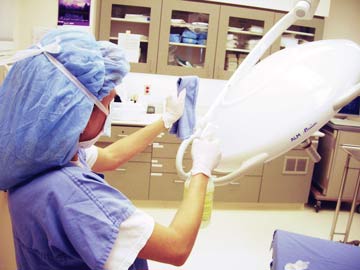The pandemic has increased the importance of properly disinfecting ORs between cases, and facilities have maintained safe spaces for surgery with rigorous manual cleaning and the strategic use of disinfection technologies. Adding new protocols to room turnover routines on the fly and having to stock various cleaning products hasn't been easy.
"It's been difficult at times to acquire disinfectant wipes," says Ann Marie Pettis, RN, BSN, CIC, FAPIC, director of infection prevention at University of Rochester (N.Y.) Medicine and president-elect of the Association for Professionals in Infection Control and Epidemiology (APIC). Although she says the situation has stabilized as of late March, her facility has at times had to use whatever type of cleaning product was available — bleach, quaternary ammonium compounds, alcohol-based solutions.
Keeping them straight, including how they should be applied, is challenging. "The manufacturers' instructions for use vary depending on the active ingredient and the substrate chemical that's embedded," says Ms. Pettis.
Informing staff about that variability, especially regarding length of application times, is an issue Ms. Pettis and others have faced throughout the pandemic. "Contact times can vary from one to 10 minutes," she says. "If you're using an agent that's long-acting, and it dries before the required time, you need to reapply it, which means you actually need to time the application and drying process."
Ms. Pettis and her team came up with a low-tech solution to the "which disinfectant are we using today and what's its dry time?" problem. "When containers of disinfecting wipes come in, staff use a sharpie to mark the product's contact time in big lettering right on the front of the package," she says. "Now staff doesn't need to look at the tiny print on the container to see what it is."
Ms. Pettis reinforces this tactic with posters that remind workers to check contact times. "Little things like that can help get the message across," she says.
.svg?sfvrsn=be606e78_3)


.svg?sfvrsn=56b2f850_5)